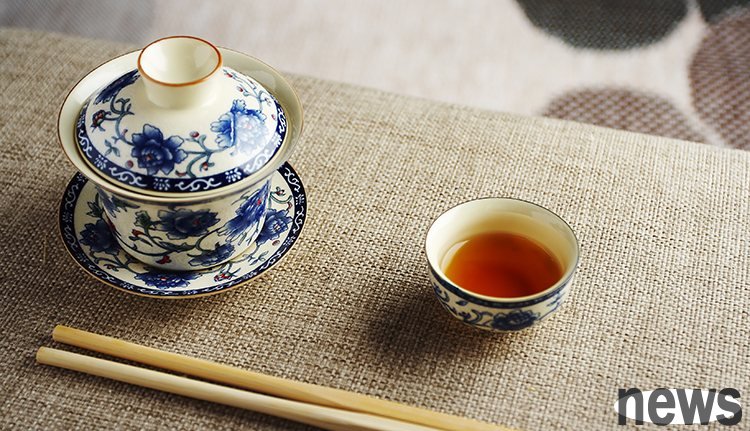
Many years ago, I gave a lecture at the Heart Association and the Inner Science and Medicine Association. The topic was "tea, coffee and heart". At that time, I found a lot of information and found that I had studied coffee and tea a lot, but the answers were inconsistent.
For example, in the UK and Australia, the more tea you drink, the more cardiovascular diseases you drink, but in other regions (including mainland Europe), the opposite is true. In Japan, the more tea you drink, the less cardiovascular diseases you drink. Perhaps the most important reason is that British people often add sugar when drinking tea, and even add desserts. It may be that the sugar damage blocks the benefits of tea.
Different tea types require different pumping time and pumping temperature. The nutrients dissolved in the tea soup are naturally different from the agricultural drug concentration (if any).
The most popular kung fu tea in Taiwan is Ulong tea, high mountain tea, iron viewing ……, usually the water temperature is 90 degrees; as for green tea such as Longjing, the water temperature is 70 to 80 degrees, or the upper method is used to inject water first and then pour tea leaves; flower tea requires the water temperature is 75 to 90 degrees; red tea usually says the water temperature is 80 to 90 degrees, but in the movie "The Best Exotic Marigold Hotel", British women of Hong Mao require boiling water to be used.
As for the soaking time, Ulong tea, high mountain tea, iron viewing, etc. are similar to red tea. After soaking for a few minutes, take out the tea leaves and drink only the tea soup; Longjing green tea or flower tea is soaked in a tea pot or tea cup and does not take it out, and then hot water is constantly added. What’s more complicated is that some tea leaves can be chewed and swallowed, some are intact, and some are ground. Although the Japanese tea ceremony is green tea, the raw materials of matcha (Tencha) will be ground and then soaked.
There are also three major factors that affect tea leaves: fermentation, roasting, and storage time.
Tea leaves are divided into fully fermented red tea (accounting for about 70% of the global tea leaves), unfermented green tea (28%) and partially fermented Ulong tea (2%). Semi-fermented tea is called Ulong tea in Wentian, but it includes lightly fermented Wenshan bread, white tea, turtle uron, high mountain tea, iron spectacle, daffodil, etc., as well as Pu'er and Ulong, etc. Each tea has different fermentation degree and has different reactions to humans. However, in literature, the research on tea is often divided into three categories: green tea, red tea, and Ulong tea. Green tea has higher antioxidants than red tea.
Some studies of Pu'er tea define it as fully fermented tea, and some say it is post fermented tea. Because it is different from other tea leaves, it should belong to another type, which contains microorganisms that make the antioxidant function higher than other red teas.
In addition to the length of the soaking time of the tea leaves, the temperature, and whether the tea leaves are ground will affect the nutrients and effectiveness of the tea leaves, the three major factors are also related to the degree of fermentation, roasting time, and storage time. According to articles published by the Taiwan Central University in July 2012 in the Journal of Food Research International, the antioxidant ingredients of fresh or five-year, ten-year, and twenty-year-old Chen tea are different.
There are studies showing that the effect of reducing weight: Ulong>Puer>Red Tea>Green TeaThe effect of reducing triglycerides: Ulong=Puer>Red Tea=Green Tea
The effect of reducing calcium sterol: Green Tea=Puer>Red Tea=Ulong Tea=Ulong Tea;3} There are the effect of increasing HDL or reducing LDL: Pu'er
The effect of reducing HDL or reducing LDL: Red Tea, Green Tea, Ulong Tea
The effect of increasing antioxidants: Red Tea, Green Tea, Ulong, Pu'er.
As mentioned above, tea has different effects on humans in different regions of Europe, the UK, and the United States, but it is important to note that when the temperature of tea soup is too high, it will increase the risk of esophageal and gastric cancer.
The Japanese research is almost one-sided, and it says that drinking tea has a protective effect on the cardiovascular system and has a greater impact on women than on men. Six scallion analysis containing Chinese and Japanese green tea shows that those who drink the most green tea can reduce cardiovascular disease by 22 percent compared to those who drink the least. There are relatively few studies on Ulong tea, and some studies have shown that drinking more than one cup of Ulong tea every day seems to reduce cardiovascular disease.
A cup of tea drinks consists of water temperature, the soaking time, the degree of grinding of the tea leaves, whether it is eaten with the tea leaves, whether the tea leaves are not fermented, semi-fermented, or fully fermented tea, storage time, even the degree of roasting, the amount of agricultural medicine retained, etc., all need to be considered. In fact, it is too complicated, so you cannot just recommend other people's habit of drinking tea. One method is safe and effective, and does not mean that other methods are OK.
I believe everyone is as confused as me, so I suggest not to think too much. Taiwan is commonly said: "Tea is black and black, black and white," "I really understand articles, wind, and tea." I shared my reading experience with you in the previous article, so that you can increase your knowledge without being too real.
(This article is excerpted from the "Hong Huifeng Medical Care Room" published by Tianxia Culture)
(Edited by: Ye Zicen)